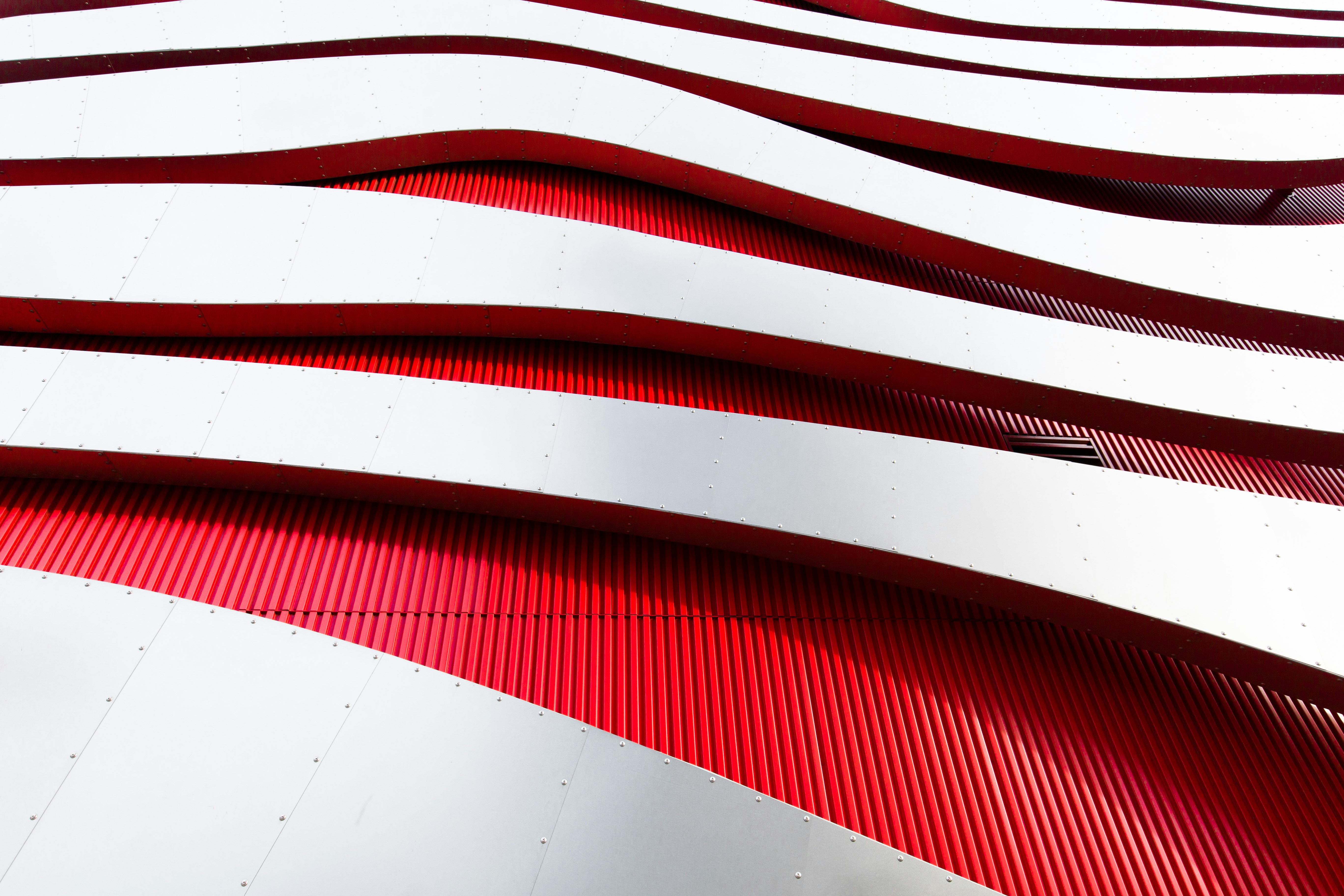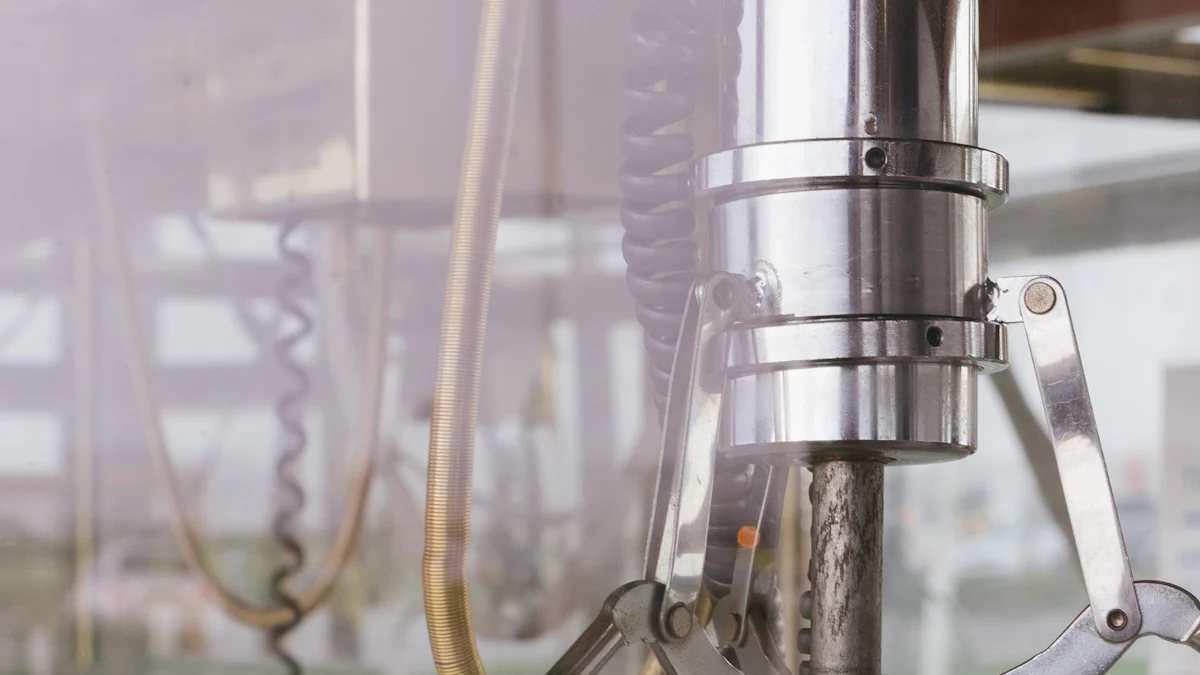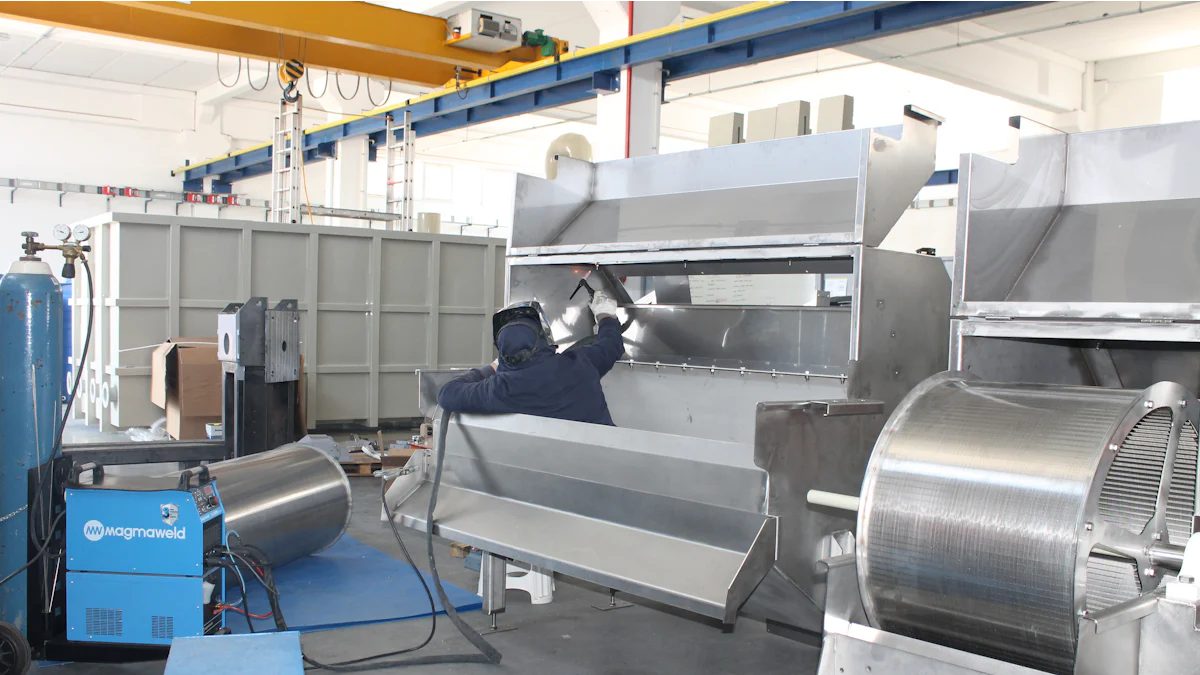How Electroplating Improves Diecast Product Durability

Electroplating in diecasting transforms the durability of diecast products by adding a protective layer that shields them from damage. This process enhances product durability by creating a barrier against environmental factors like moisture and oxidation. The benefits of electroplating include improved durability and resistance to wear, ensuring your diecast products last longer. By depositing metals like nickel or chromium, electroplating forms an extra layer of strength, reducing surface degradation. This protective barrier not only provides superior protection but also ensures enhanced durability, making electroplating an essential step in diecasting.
Understanding Electroplating in Diecasting
Electroplating plays a vital role in enhancing the performance and durability of diecast products. By applying a thin layer of metal coating, this process not only improves the physical properties of diecast components but also elevates their aesthetic appeal. To fully appreciate its benefits, it’s essential to understand how electroplating works and why it’s a preferred choice for diecast metal parts.
What Is Electroplating?
Electroplating is a surface treatment technique that involves depositing a thin layer of metal onto a substrate using an electric current. This process enhances the surface properties of the base material, such as corrosion resistance, wear resistance, and visual appeal. For diecast products, electroplating ensures a protective barrier that shields the surface from environmental damage and mechanical wear.
The electroplating process begins by immersing the diecast component in an electrolyte solution containing metal ions. When an electric current passes through the solution, the metal ions bond to the surface of the diecast part, forming a uniform and durable coating. This method is widely used in industries like automotive, consumer goods, and industrial manufacturing to improve the functionality and appearance of diecast components.
How Electroplating Enhances Diecast Metal Parts
Electroplating transforms diecast metal parts by addressing their vulnerabilities and enhancing their strengths. It provides a robust solution for improving durability, extending lifespan, and achieving a polished finish.
Common Metals Used in Electroplating Diecast Products
Several metals are commonly used in the electroplating process to achieve specific benefits:
Nickel: Known for its hardness and durability, nickel plating enhances wear resistance and provides a smooth, reflective finish.
Chromium: Often used for its superior corrosion resistance, chromium plating protects diecast parts from rust and oxidation while offering a sleek appearance.
Zinc: Zinc plating is ideal for environmental protection, as it creates a sacrificial layer that prevents the underlying metal from corroding.
Copper: Frequently used as an underlayer, copper plating improves adhesion and conductivity, making it a versatile choice for complex applications.
Each metal offers unique advantages, allowing manufacturers to tailor the electroplating process to meet specific requirements.
Key Steps in the Electroplating Process
The electroplating process involves several critical steps to ensure a high-quality finish:
Surface Preparation: The diecast component undergoes thorough cleaning to remove dirt, grease, and oxides. This step ensures proper adhesion of the metal coating.
Activation: The surface is treated with chemical solutions to make it receptive to the plating material.
Electroplating: The component is immersed in an electrolyte solution, and an electric current is applied. Metal ions from the solution deposit onto the surface, forming a uniform layer.
Post-Treatment: After plating, the component may undergo polishing or buffing to achieve the desired finish. This step enhances both the appearance and functionality of the product.
These steps highlight the precision and care required to produce electroplated diecast products that meet industry standards. By following this process, manufacturers can deliver components with enhanced durability, resistance, and visual appeal.
Corrosion Resistance: A Key Benefit of Electroplating

Electroplating offers a powerful solution to enhance the corrosion resistance of diecast products. By applying a protective metal layer, this process helps your products fight off corrosion and withstand environmental challenges like moisture and oxidation. The added coating acts as a shield, ensuring your diecast components maintain their structural integrity and durability over time.
How Electroplating Protects Against Rust and Oxidation
Rust and oxidation are two of the most common threats to metal surfaces. When exposed to air and moisture, unprotected metals can corrode, leading to weakened structures and reduced functionality. Electroplating addresses this issue by creating a barrier that prevents direct contact between the base metal and harmful environmental factors.
For example, zinc electroplating provides exceptional corrosion protection by forming a sacrificial layer. This layer corrodes preferentially, safeguarding the underlying metal from rust and oxidation. Additionally, zinc has the unique ability to develop a patina over time, which further slows down the corrosion process. This makes it an ideal choice for environments with high humidity or frequent exposure to water.
Chromium plating also plays a significant role in protecting against oxidation. Its non-reactive surface resists rust formation, even in harsh conditions. By choosing the right electroplating material, you can ensure your diecast products remain resistant to environmental factors and maintain their performance.
The Role of Coating Materials in Corrosion Resistance
The effectiveness of electroplating largely depends on the coating material used. Each material offers distinct advantages, allowing you to tailor the process to meet specific needs.
Zinc Coatings for Environmental Protection
Zinc coatings are widely recognized for their ability to provide robust corrosion protection. They act as a sacrificial layer, corroding before the base metal does. This sacrificial property ensures that your diecast products remain intact, even in challenging environments. Zinc also forms corrosion byproducts, such as zinc patina, which serve as an additional barrier against moisture and oxidation. This makes zinc plating a cost-effective and reliable choice for enhancing resistance to environmental factors.
Moreover, zinc coatings can be treated with chromate conversion coatings to further boost their corrosion resistance. These treatments not only improve protection but also offer a variety of color finishes, adding aesthetic value to your products.
Chromium Coatings for Long-Term Durability
Chromium coatings excel in providing long-term durability and corrosion protection. Their hard, non-reactive surface resists rust and oxidation, making them suitable for applications where longevity is critical. Chromium plating also enhances the visual appeal of diecast products, giving them a sleek and polished finish.
In addition to its corrosion-resistant properties, chromium offers excellent wear resistance. This dual benefit makes it a preferred choice for components exposed to both environmental and mechanical stress. By incorporating chromium electroplating, you can ensure your diecast products remain durable and visually appealing for years.
Wear Resistance: Strengthening Diecast Metal Parts
Electroplating significantly enhances the wear resistance of diecast metal parts. By adding a durable metal layer, it protects components from friction, abrasion, and mechanical wear. This process ensures that your diecast products maintain their functionality and appearance, even under demanding conditions. Let’s explore how electroplating achieves this and the materials that make it possible.
How Electroplating Reduces Friction and Surface Damage
Friction and surface damage are common challenges for diecast products, especially those used in high-stress environments. Electroplating addresses these issues by creating a hard, protective layer on the surface of the metal. This layer reduces direct contact between the base material and external forces, minimizing wear over time.
For example, when you use electroplated diecast components in machinery, the plated surface withstands repeated friction without degrading. This added protection prevents scratches, dents, and other forms of surface damage. As a result, electroplated products last longer and perform better than non-electroplated ones. The enhanced surface hardness provided by plating ensures that your components can endure rigorous use without compromising their structural integrity.
Coating Materials That Enhance Wear Resistance
The choice of coating material plays a crucial role in improving wear resistance. Different metals offer unique benefits, allowing you to select the best option for your specific application.
Nickel Coatings for Hardness and Durability
Nickel is one of the most popular materials used in electroplating due to its exceptional surface hardness and durability. A nickel-plated layer provides a tough barrier that resists wear and tear, making it ideal for components exposed to constant friction. This coating also enhances the product's ability to withstand impacts, ensuring long-term reliability.
Nickel plating not only improves wear resistance but also adds a smooth, reflective finish to your diecast products. This dual benefit makes it a preferred choice for industries like automotive and consumer goods, where both performance and aesthetics matter.
Chromium Coatings for Abrasion Resistance
Chromium is another excellent option for enhancing wear resistance. Its hard, non-reactive surface protects diecast components from abrasions and mechanical stress. Chromium plating creates a robust shield that prevents surface degradation, even in harsh environments.
In addition to its abrasion resistance, chromium offers superior surface hardness, which further strengthens the diecast product. This makes it an ideal choice for applications requiring high durability, such as industrial machinery and heavy-duty tools. By incorporating chromium plating, you can ensure that your products remain resilient and functional over time.
Longevity: Extending the Life of Diecast Products
Electroplating plays a vital role in extending the lifespan of diecast products. By adding a protective metal layer, it shields components from wear, corrosion, and environmental damage. This process enhances the durability of diecast items, ensuring they maintain their functionality and appearance over time. Electroplated parts not only resist external factors but also require less maintenance, making them a cost-effective solution for long-term use.
The longevity of components improves significantly with electroplating. The thin metal coating acts as a barrier against mechanical stress and environmental exposure. For example, nickel or chromium plating strengthens the surface, reducing the impact of friction and abrasion. This ensures that diecast products remain reliable and efficient, even in demanding conditions. Electroplating also enhances the aesthetic appeal of diecast items, adding value to their extended lifespan.
The Impact of Electroplating on Product Lifespan
Electroplating directly influences the lifespan of diecast products by improving their resistance to wear and tear. The process creates a robust surface that withstands daily use and harsh environments. For instance, zinc plating offers exceptional protection against corrosion, while chromium plating provides superior hardness and abrasion resistance. These coatings ensure that electroplated components retain their structural integrity for years.
Electroplated parts also benefit from reduced maintenance needs. The protective layer minimizes surface damage, lowering the frequency of repairs or replacements. This makes electroplating an ideal choice for industries that prioritize durability and cost-efficiency. Whether you use diecast products in automotive applications or consumer goods, electroplating ensures they perform reliably throughout their lifespan.
Applications of Electroplated Diecast Products
Electroplating metal part applications span across various industries, showcasing its versatility and effectiveness. From automotive components to industrial tools, electroplated parts deliver enhanced performance and longevity.
Automotive Components
In the automotive industry, electroplated diecast products are essential for ensuring durability and reliability. Components like engine parts, wheel rims, and decorative trims benefit from electroplating. Chromium plating, for example, protects these parts from rust and wear, even under extreme conditions. Nickel plating adds a polished finish, enhancing both functionality and visual appeal.
Electroplated components in vehicles also contribute to safety and efficiency. By resisting corrosion and mechanical stress, they maintain their performance over time. This makes electroplating a critical process for manufacturing high-quality automotive parts.
Industrial and Consumer Goods
Electroplated diecast products play a significant role in industrial and consumer applications. In industrial settings, tools and machinery parts require robust surfaces to withstand heavy use. Electroplating provides the necessary protection, ensuring these components remain functional and durable. Zinc and nickel coatings are commonly used to enhance wear resistance and prevent corrosion.
For consumer goods, electroplating adds both durability and aesthetic value. Items like household appliances, electronic devices, and decorative fixtures benefit from the sleek finish and extended lifespan provided by electroplating. This process ensures that diecast products meet the demands of everyday use while maintaining their quality and appearance.
Aesthetic and Economic Advantages of Electroplating

Electroplating offers more than just durability and protection. It enhances the visual appeal of diecast products while delivering significant economic benefits. By improving both aesthetics and cost-effectiveness, electroplating advantages make it an indispensable process for manufacturers and consumers alike.
Enhancing the Visual Appeal of Diecast Products
Electroplating transforms the appearance of diecast products, making them more attractive and marketable. The process allows you to achieve a variety of finishes that cater to different design preferences and applications.
Polished Finishes for a Premium Look
Electroplating creates polished finishes that elevate the look of diecast products. For instance, chrome plating produces a reflective, mirror-like surface that exudes luxury and sophistication. This type of finish is often used in automotive trims, decorative fixtures, and high-end consumer goods. The sleek and shiny appearance not only enhances the product's aesthetic value but also communicates quality and craftsmanship.
"Electroplating can produce bright, shiny, and attractive finishes in various colors."
Additionally, electroplating can deliver darker finishes, such as black or dark gray, which provide a modern and elegant touch. These finishes are ideal for products where subtlety and refinement are key design elements. Whether you prefer a bold shine or a muted elegance, electroplating offers unparalleled versatility in achieving the desired look.
Customizable Coatings for Branding and Design
Electroplating enables customization, allowing you to tailor the surface appearance of diecast products to align with specific branding or design goals. Manufacturers can incorporate unique colors, textures, and metallic finishes to create products that stand out in the market. For example, gold or silver plating adds a luxurious feel, while zinc coatings can be treated with chromate conversion for vibrant color options.
This level of customization makes electroplating a powerful tool for branding. You can use it to create distinctive designs that resonate with your target audience. By enhancing the visual appeal of your products, electroplating helps you establish a strong brand identity and attract more customers.
Cost-Effectiveness of Electroplating
Beyond aesthetics, electroplating delivers economic advantages that make it a cost-effective solution for diecast products. It reduces long-term expenses while increasing the overall value of your products.
Reducing Maintenance Costs Over Time
Electroplating minimizes maintenance needs by providing a durable protective layer. This layer shields diecast products from wear, corrosion, and environmental damage, reducing the likelihood of repairs or replacements. For instance, chrome-plated components resist rust and abrasion, ensuring they remain functional and visually appealing for years.
By investing in electroplating, you save money on maintenance and extend the lifespan of your products. This makes it an economical choice for industries that prioritize durability and reliability, such as automotive and industrial manufacturing.
Improving Product Value and Marketability
Electroplating enhances the perceived value of diecast products, making them more appealing to consumers. The polished finishes and customizable coatings add a premium look that justifies higher price points. Additionally, the durability provided by electroplating ensures that your products maintain their quality over time, further boosting their marketability.
"The aesthetic enhancement provided by electroplating can be seen as a key aspect of a product’s marketing strategy."
Electroplated products stand out in competitive markets due to their superior appearance and performance. Whether you're targeting luxury buyers or industrial clients, electroplating gives you a competitive edge by combining functionality with visual appeal.
Choosing the Right Electroplating Solution for Your Diecast Products
Selecting the right electroplating solution ensures your diecast products achieve optimal durability, functionality, and visual appeal. By understanding key factors and seeking professional expertise, you can make informed decisions that enhance the quality and longevity of your components.
Factors to Consider When Selecting Coating Materials
Choosing the appropriate coating material is crucial for achieving the desired performance and appearance of your diecast products. Each material offers unique benefits, so you must evaluate your specific needs before making a decision.
Corrosion Resistance Requirements: Consider the environment where your product will be used. For humid or corrosive conditions, zinc or chromium coatings provide excellent protection against rust and oxidation. Zinc acts as a sacrificial layer, while chromium offers a hard, non-reactive surface.
Wear Resistance Needs: If your diecast components face high friction or mechanical stress, nickel or chromium coatings are ideal. Nickel enhances surface hardness and durability, while chromium resists abrasions and maintains structural integrity under demanding conditions.
Aesthetic Preferences: The visual appeal of your product plays a significant role in its marketability. Chromium plating delivers a sleek, polished finish, while customizable coatings like gold or silver add a luxurious touch. Zinc coatings can also be treated for vibrant color finishes, aligning with branding or design goals.
Application-Specific Requirements: Different industries have unique demands. Automotive components may require both corrosion and wear resistance, while consumer goods often prioritize aesthetics. Evaluate the intended use of your product to select the most suitable coating material.
"The desire to produce a high-quality electroplated finish on a diecasting has major implications to its basic design."
Additionally, consider the design of your diecast component. Surface defects, parting lines, and flat surfaces can impact the quality of the electroplated finish. Proper planning during the design phase ensures better results and minimizes challenges during the plating process.
The Importance of Professional Electroplating Services
Partnering with experienced professionals guarantees high-quality electroplating results. Skilled service providers possess the expertise and equipment needed to deliver durable and visually appealing finishes.
Expertise in Material Selection: Professionals understand the properties of different coating materials and can recommend the best option for your specific application. Their knowledge ensures your diecast products receive the most effective protection and enhancement.
Precision in the Electroplating Process: Achieving a uniform and durable coating requires precision at every step. From surface preparation to post-treatment, professionals follow strict protocols to ensure the highest standards of quality.
Customization Capabilities: Professional services offer a wide range of customization options, allowing you to tailor the appearance and functionality of your products. Whether you need a polished finish, vibrant colors, or enhanced durability, experts can meet your requirements.
Access to Advanced Technology: Reputable providers use state-of-the-art equipment and techniques to overcome challenges associated with electroplating diecast components. For example, they address issues like uneven coating thickness on complex surfaces, ensuring a flawless finish.
"At DST Tech Private Limited, we ensure that the diecast products we manufacture receive the added advantage of enhanced longevity and aesthetic appeal."
By choosing professional electroplating services, you invest in the long-term performance and value of your diecast products. Their expertise not only enhances durability but also elevates the overall quality, making your components stand out in competitive markets.
Electroplating transforms diecast products by enhancing their durability and performance. It provides a protective layer that resists corrosion, reduces wear, and extends the lifespan of components. This process not only strengthens diecast materials but also improves their appearance, making them more appealing and valuable. By investing in electroplating, you ensure your diecast products remain reliable and visually attractive for years. Whether for industrial or consumer applications, electroplating offers a practical and cost-effective solution to protect and enhance your diecast items.
FAQ
What are the benefits of electroplating in enhancing the longevity of diecast products?
Electroplating significantly extends the lifespan of diecast products. It adds a protective layer that shields the surface from corrosion, wear, and environmental damage. This process also enhances durability and reduces the risk of surface degradation. Additionally, electroplating improves the aesthetic appeal of diecast items, making them more visually attractive and long-lasting.
What are the special aspects of electroplating on zinc die cast components?
Electroplating on zinc die cast components offers both protective and decorative benefits. It provides a high-quality finish that enhances the appearance and durability of the product. However, zinc die castings require careful analysis of their morphology and composition. This ensures the electroplating process achieves a uniform and defect-free coating, especially for complex shapes.
What is the main downside of electroplating on die castings?
The primary challenge of electroplating die castings lies in achieving an even coating on parts with intricate shapes. Complex geometries can make it difficult to apply the plating uniformly. Additionally, the process demands clean conditions, specialized equipment, and multiple applications to meet desired thickness and quality standards. These factors can increase the complexity and cost of the process.
How is electroplating used to improve the aesthetic appeal of products?
Electroplating enhances the visual appeal of products by providing polished and reflective finishes. For example, chrome plating creates a sleek, mirror-like surface that exudes sophistication. This makes electroplating a popular choice in industries like automotive, jewelry, and luxury goods, where appearance plays a crucial role. The process also allows for customizable finishes, aligning with specific design preferences.
What is a primary advantage of electroplating in zinc die-casting?
A key advantage of electroplating in zinc die-casting is its ability to deliver superior corrosion resistance. By depositing a thin layer of corrosion-resistant metal, such as zinc or chromium, the process protects the surface from rust and oxidation. This ensures the diecast components remain durable and functional, even in harsh environments.
How does electroplating enhance the appearance of finished parts?
Electroplating transforms the appearance of finished parts by adding a smooth, reflective surface. For instance, chrome plating provides a shiny, polished look that enhances the product's visual appeal. This is especially valuable in industries like automotive and consumer goods, where aesthetics are essential. Electroplating also allows for a variety of finishes, from bright metallic to subtle matte, catering to diverse design needs.
Why is electroplating crucial in the manufacturing of consumer electronics?
Electroplating plays a vital role in consumer electronics by improving the conductivity of electrical components. It involves applying a thin layer of conductive material, such as gold or silver, onto the surface. This enhances electrical performance and ensures reliable connections. The process also protects components from wear and corrosion, contributing to the longevity of electronic devices.
What implications does electroplating have on the design of a diecasting?
Electroplating requires a defect-free surface to achieve high-quality finishes. This impacts the design of diecast components, as manufacturers must consider factors like gate positioning and part polishing. Additionally, electroplate build-up can affect the dimensions of the product, requiring precise planning during the design phase. Proper preparation ensures the electroplating process delivers optimal results.
What is the main purpose of using chromium in electroplating?
Chromium is widely used in electroplating for its exceptional corrosion resistance and durability. It creates a hard, non-reactive surface that protects diecast products from rust and wear. Chromium plating also enhances the visual appeal of components, offering a sleek and polished finish. This makes it a preferred choice for applications requiring both functionality and aesthetics.
Can electroplating be customized for specific applications?
Yes, electroplating offers extensive customization options to meet specific application needs. Manufacturers can choose from various metals, such as nickel, chromium, or gold, to achieve desired properties. The process also allows for tailored finishes, including reflective, matte, or colored coatings. This versatility makes electroplating suitable for a wide range of industries, from automotive to consumer goods.
See Also
Exploring the Types of Powder Coating Methods and Their Uses
Understanding Functional Testing in CNC and Die Casting
Seven Essential Steps to Collaborate with Global Diecast Factories
Understanding MOQ and Its Effects on RFQs
About Hunan Puka
Established in 2016 and based in Hunan, China, with a liaison point in Berlin, we are a Tier 2 supplier for the automobile industry. We specialize in the production of customized aluminum die-casting parts designed for machines with a closing force ranging from 280 to 800 tons, with subsequent manufacturing process CNC machining and surface treatment. Our commitment to quality is reflected in our accredited quality management system, certified by ISO9001:2015 and IATF16949:2016 standards.


